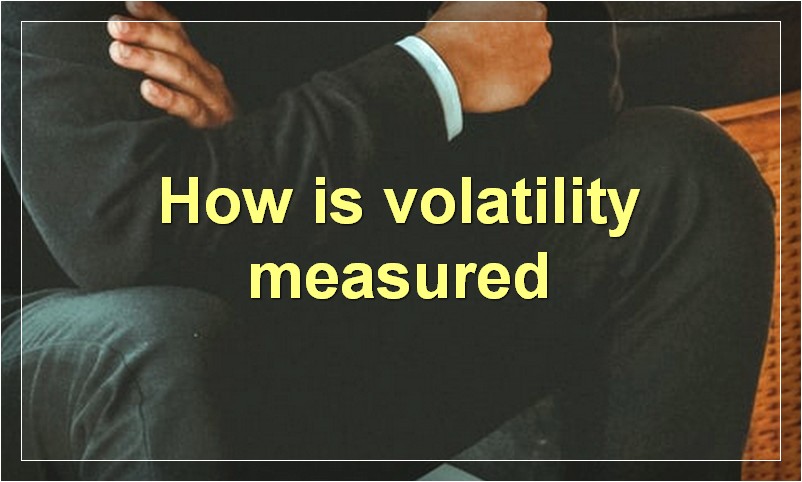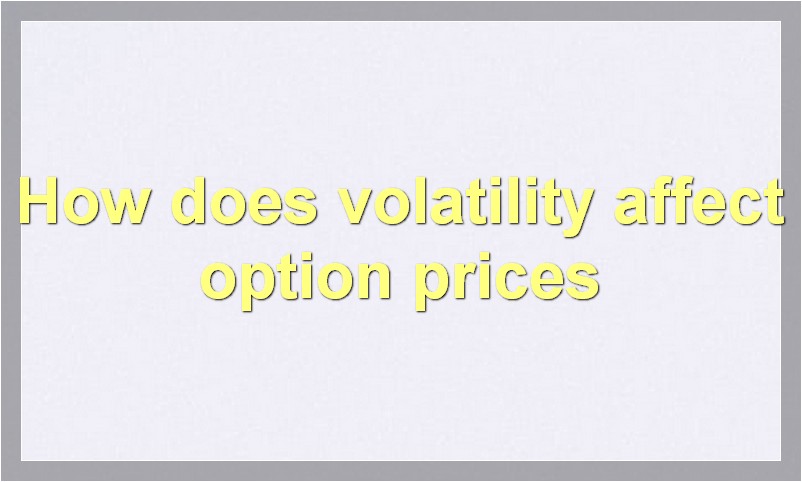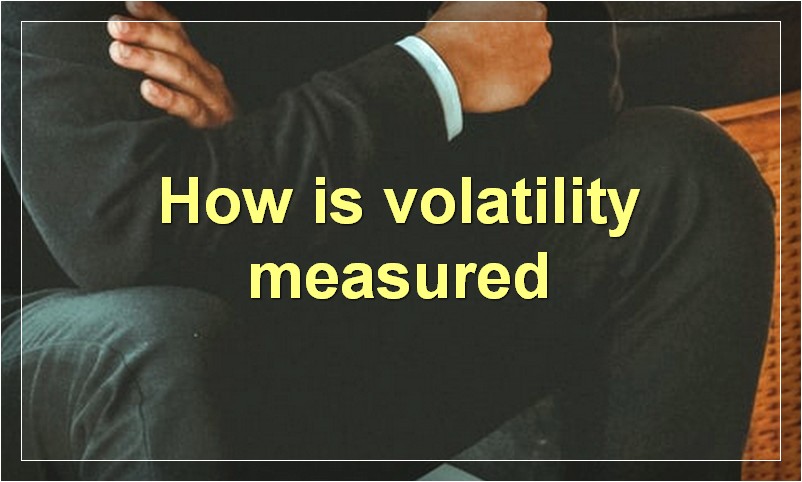If you’re new to the world of investing, volatility indicators can seem like a foreign language. However, understanding how to read these indicators is crucial to making informed investment decisions. In this article, we’ll demystify volatility indicators and explain everything you need to know about them.
What is a volatility indicator
Volatility is a key concept that every trader needs to understand. It is a measure of how much the price of an asset moves over time. The higher the volatility, the greater the price movement.
There are many different ways to measure volatility. One popular method is using the standard deviation of prices over a certain period of time. This gives you a good idea of how much the price has moved around in the recent past.
Another popular volatility indicator is the Bollinger Band. This uses a moving average and standard deviation to create upper and lower bands. If the price is close to the upper band, it is considered high volatility. If the price is close to the lower band, it is considered low volatility.
Some traders prefer to use more complex indicators such as the Chande Momentum Oscillator or the Average True Range. These indicators can be useful in identifying periods of high or low volatility.
Volatility can have a big impact on your trading strategy. If you are trading a volatile asset, you will need to be more careful with your entry and exit points. You will also need to use stop-losses to protect your capital.
On the other hand, if you are trading in a low volatility environment, you can take more risks. Your stop-losses can be wider and your profit targets can be larger.
It is important to understand how volatility affects your trading strategy before entering any trade. By using proper risk management techniques, you can trade successfully in both volatile and non-volatile markets.
How is volatility measured

Volatility is a statistical measure of the dispersion of returns for a given security or market index. Volatility can either be measured by using the standard deviation or variance between return from period to period.
What are the most popular volatility indicators
There are a number of volatility indicators that are popular among traders, and each has its own strengths and weaknesses. Perhaps the most well-known indicator is the CBOE Volatility Index (VIX), which is a measure of implied volatility from S&P 500 index options. Other popular indicators include the Standard Deviation (STD) and Average True Range (ATR).
Each of these indicators can be useful in different ways. For example, the VIX is often used as a gauge of market fear or complacency. A high VIX reading usually corresponds to increased market uncertainty, while a low VIX indicates that traders are more confident. The STD can be used to identify potential trend reversals, as large deviations from the mean tend to precede significant price moves. Finally, the ATR can help traders set appropriate stop-loss levels, as it measures the average distance that prices move away from their previous close.
In general, volatile markets tend to see higher readings on all of these indicators. However, it’s important to keep in mind that there is no perfect indicator, and each one should be used in conjunction with other technical and fundamental analysis before making any trading decisions.
How do you interpret a volatility indicator
A volatility indicator is a tool that measures the amount of risk in the market. There are many different ways to interpret a volatility indicator, but one popular method is to use it as a measure of market uncertainty. When markets are volatile, it means that there is a lot of risk involved and that investors are uncertain about what will happen next. This can be a good time to buy, because prices are usually low during periods of high volatility. However, it is also important to be aware of the potential for further declines during these periods.
What is the difference between historical and implied volatility
Volatility is a measure of how much the price of an asset, such as a stock or commodity, fluctuates over time. Volatility can be measured in absolute terms, such as the standard deviation of returns, or in relative terms, such as the beta coefficient.
Historical volatility is a measure of how much an asset’s price has fluctuated in the past. It is calculated using data from past price movements. Implied volatility is a measure of how much an asset’s price is expected to fluctuate in the future. It is calculated using data from option prices, which are themselves based on expectations of future price movements.
Both historical and implied volatility are useful measures of risk. Historical volatility can be used to assess how risky an investment is in the past. Implied volatility can be used to assess how risky an investment is in the future.
How does volatility affect option prices

Volatility is a key factor in option pricing. It is a measure of the amount by which an asset price is expected to fluctuate over a given period of time. The higher the volatility, the greater the price movement and the more risky the asset.
When it comes to options, volatility can have a significant impact on the price. An option with high volatility will be more expensive than one with low volatility. This is because there is a greater chance that the price of the underlying asset will move enough to make the option profitable.
However, it is important to remember that volatility is not the only factor that affects option prices. Other factors such as the underlying asset price, strike price, time to expiration, and interest rates all play a role.
What is the VIX
What is the VIX?
The VIX, or the “Volatility Index,” is a measure of market risk and is calculated using S&P 500 index options. It is sometimes referred to as the “fear index” because it is used to gauge investor sentiment and market expectations of volatility in the near future.
The VIX is calculated by taking the weighted average of the prices of out-of-the-money put options on the S&P 500 index. These put options are used to protect against a decline in the stock market. The higher the VIX, the greater the market’s expectation of volatility, and vice versa.
The VIX can be used as a tool by investors to help make investment decisions. For example, if the VIX is high, it may be a good time to buy put options as a form of protection against a possible market decline. Conversely, if the VIX is low, it may be a good time to sell put options since there is less expected market volatility.
Investors should keep in mind that the VIX is not a perfect predictor of future market movements and should not be used as the sole basis for making investment decisions. However, it can be a helpful tool in conjunction with other forms of analysis.
How can I use volatility to my advantage
Volatility can be a great tool for investors if used correctly. By understanding how volatility works, you can use it to your advantage and make money even in the most volatile markets.
There are a few things you need to understand about volatility before you can start using it to your advantage. First, volatility is not always bad. In fact, it can actually be a good thing for investors. Volatility provides opportunities to buy low and sell high. If you are able to buy when prices are low and sell when they are high, you can make a profit even in a volatile market.
Second, you need to know how to measure volatility. There are many ways to measure volatility, but the most common is the standard deviation. The standard deviation measures how much prices fluctuate around the average price. The higher the standard deviation, the more volatile the market is.
Third, you need to know how to use volatility to your advantage. There are two main ways to do this: buying when prices are low and selling when they are high, and shorting when prices are high and covering when they are low. By using these strategies, you can make money even in the most volatile markets.
What are some common misconceptions about volatility
Volatility is often thought of as a bad thing, but it doesn’t have to be. Volatility simply refers to the amount of risk or uncertainty associated with an asset. A volatile asset is one that has the potential to lose or gain value rapidly.
While volatile assets may be riskier, they also tend to offer higher returns. So, if you’re willing to take on a little extra risk, volatile assets can be a good way to boost your portfolio’s performance.
Of course, not all volatile assets are created equal. Some are much riskier than others. So, it’s important to do your research and only invest in assets that you understand and are comfortable with.
What is the difference between standard deviation and variance
There are two measures of variability in statistics: standard deviation and variance. Standard deviation is the square root of the variance. It is the most common measure of variability. Variance is the average of the squared deviations from the mean.

